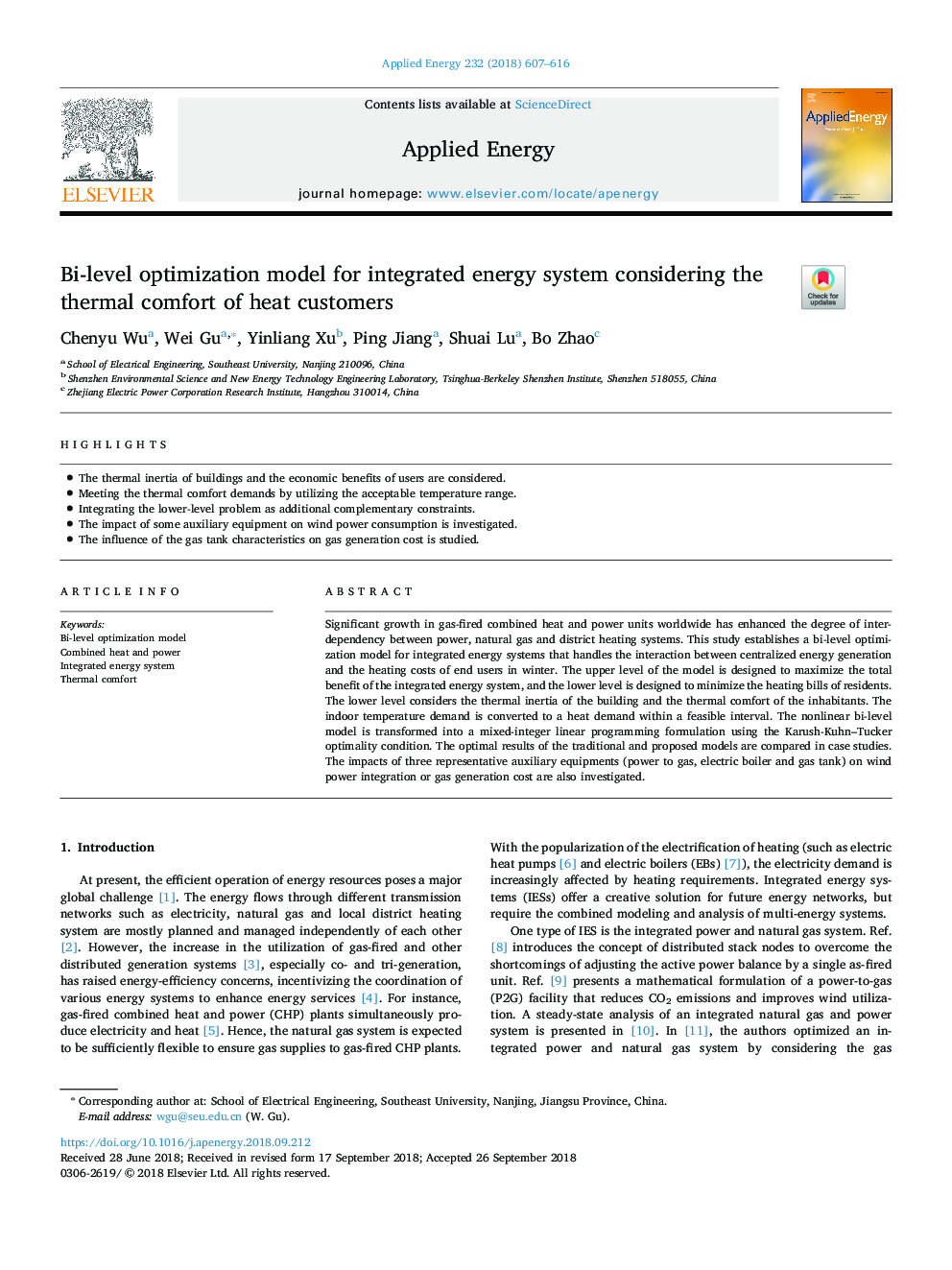| Article ID | Journal | Published Year | Pages | File Type |
|---|---|---|---|---|
| 11263199 | Applied Energy | 2018 | 10 Pages |
Abstract
Significant growth in gas-fired combined heat and power units worldwide has enhanced the degree of interdependency between power, natural gas and district heating systems. This study establishes a bi-level optimization model for integrated energy systems that handles the interaction between centralized energy generation and the heating costs of end users in winter. The upper level of the model is designed to maximize the total benefit of the integrated energy system, and the lower level is designed to minimize the heating bills of residents. The lower level considers the thermal inertia of the building and the thermal comfort of the inhabitants. The indoor temperature demand is converted to a heat demand within a feasible interval. The nonlinear bi-level model is transformed into a mixed-integer linear programming formulation using the Karush-Kuhn-Tucker optimality condition. The optimal results of the traditional and proposed models are compared in case studies. The impacts of three representative auxiliary equipments (power to gas, electric boiler and gas tank) on wind power integration or gas generation cost are also investigated.
Related Topics
Physical Sciences and Engineering
Energy
Energy Engineering and Power Technology
Authors
Chenyu Wu, Wei Gu, Yinliang Xu, Ping Jiang, Shuai Lu, Bo Zhao,
